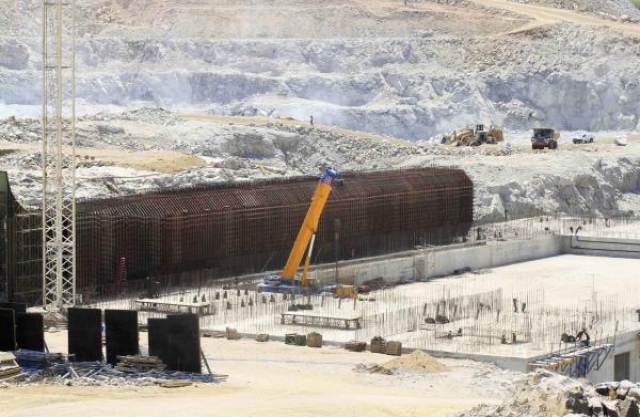 A general view shows construction activity on the Grand Renaissance dam in Guba Woreda, Benishangul Gumuz region in this March 16, 2014 file photo.
A general view shows construction activity on the Grand Renaissance dam in Guba Woreda, Benishangul Gumuz region in this March 16, 2014 file photo.
BY AARON MAASHO
Wed Apr 23, 2014
ADDIS ABABA — (Reuters) – Ethiopia’s bold decision to pay for a huge dam itself has overturned generations of Egyptian control over the Nile’s waters, and may help transform one of the world’s poorest countries into a regional hydropower hub.
By spurning an offer from Cairo for help financing the project, Addis Ababa has ensured it controls the construction of the Renaissance Dam on a Nile tributary. The electricity it will generate – enough to power a giant rich-world city like New York – can be exported across a power-hungry region.
But the decision to fund the huge project itself also carries the risk of stifling private sector investment and restricting economic growth, and may jeopardize Ethiopia’s dream of becoming a middle income country by 2025.
The dam is now a quarter built and Ethiopia says it will start producing its first 750 megawatts of electricity by the end of this year. In the sandy floor of the Guba valley, near the Sudanese border, engineers are laying compacted concrete to the foundations of the barrage that will tower 145 meters high and whose turbines will throw out 6,000 megawatts – more than any other hydropower project in Africa.
So far, Ethiopia has paid 27 billion birr ($1.5 billion) out of a total projected cost of 77 billion birr for the dam, which will create a lake 246 km (153 miles) long.
Read more.
—
Join the conversation on Twitter and Facebook.

























